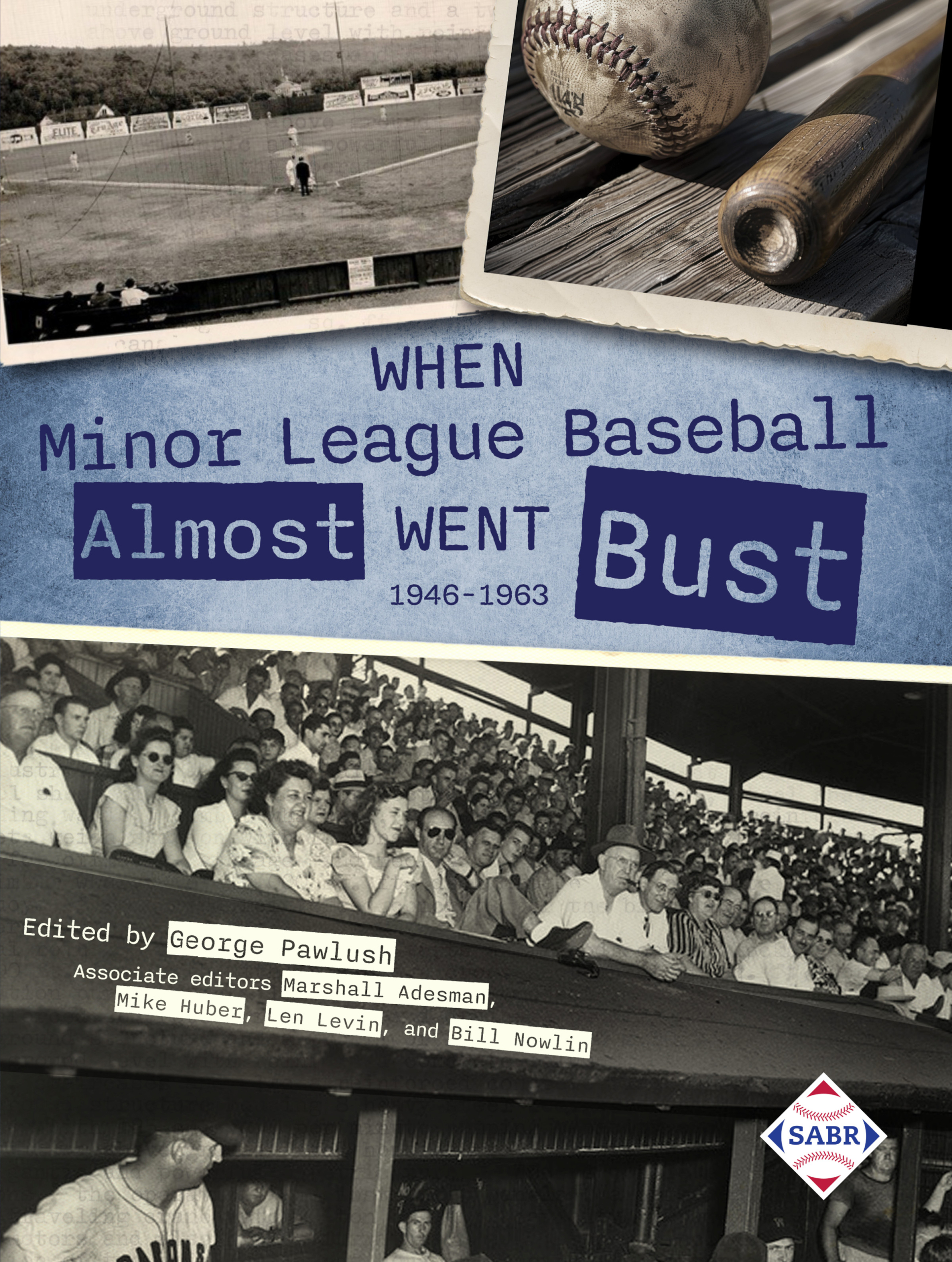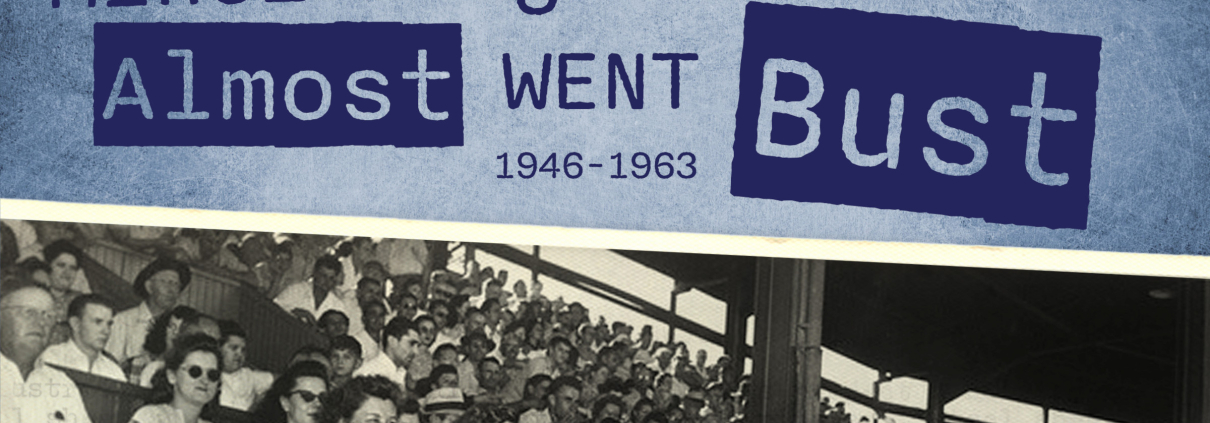Professional Baseball and Amusement Parks
This article was written by Vince Guerrieri
This article was published in When Minor League Baseball Almost Went Bust: 1946-1963
 Many amusement parks had seen their fortunes intertwined with minor-league baseball, and both faced hard times in the post-World War II era. The amusement parks that had survived to the 1950s— many of which started life at the turn of the century as “trolley parks,” built at the end of a streetcar line— were starting to look old and shabby. Many were in urban areas, which made them not only landlocked for future development, but prone to decline as the cities themselves were being abandoned by residents for the suburbs.
Many amusement parks had seen their fortunes intertwined with minor-league baseball, and both faced hard times in the post-World War II era. The amusement parks that had survived to the 1950s— many of which started life at the turn of the century as “trolley parks,” built at the end of a streetcar line— were starting to look old and shabby. Many were in urban areas, which made them not only landlocked for future development, but prone to decline as the cities themselves were being abandoned by residents for the suburbs.
New technologies also contributed to the decline of amusement parks and minor-league baseball in the postwar era. The trolley lines that transported revelers to the parks had gradually been replaced, first by buses and then by personal automobiles. And radio and television in postwar America were major factors that led to minor-league baseball’s decline, only halting after the market was effectively restructured with the 1963 Professional Baseball Agreement.
The 1950s were difficult times for both minor-league baseball and amusement parks. The New England League folded after the 1949 season, the Colonial League did the same after the 1950 season, and the Mid-Atlantic League, with franchises in Canton and Youngstown that played home games at amusement parks, folded after the 1951 season. Throughout the decade, leagues faltered and in some instances disappeared, victims of suburbanization, TV and radio broadcasts of the major leagues, and the minor leagues’ own over-extension.
Concurrently, many of the trolley parks that had survived the Great Depression fell victim to suburbanization and urban unrest in the 1950s and 1960s. Chicago’s Riverview Park, Palisades Park in New Jersey, and Euclid Beach in Cleveland all closed.
By the 1960s, many urban amusement parks and independent minor-league teams faced the same unappealing choice of fate: closure or conglomeration.
The rise of professional baseball in the late nineteenth and early twentieth centuries coincided with the rise of the amusement park.
In the era of horse-drawn streetcars, there might be a picnic ground at the end of the line, maybe including a bandstand and a dance pavilion. The parks were built to encourage ridership during off-peak hours.
But as those lines became electrified, many of the companies paid a flat rate for power, and started setting up large amusement parks at the end of the line, most of which included similar features like rides, games, and a dance hall.1
These trolley parks also in many instances had a field. When they hosted company picnics or gatherings of fraternal organizations, the fields might host a pickup baseball game. (In the Great Lakes region, it was not uncommon for a lot of factories to have an amateur baseball team— or an amateur basketball team; there are still NBA teams today that can trace their roots back to amateur company teams in the days before World War II.) The fields would also host barnstorming teams, both of major leaguers and of Negro League players, and in some instances, become the home field for independent minor-league teams.
The history of baseball at amusement parks goes back almost as far as the game itself. In 1885 John B. Day owned two teams under the auspices of the Metropolitan Exhibition Company. The Gothams (later Giants) were the more popular team, and after that season Day sold off the other team that called the Polo Grounds home. The new owner of the Metropolitans was Erastus Wiman, who moved the team to Staten Island’s St. George Grounds. Wiman had visions of a grand resort near a ferry/railroad terminal, but they did not come to pass, and the Metropolitans played at St. George Grounds for two years before being bought and merged with the Brooklyn Greys.
Because most trolley lines ended at the outskirts of a city or even outside the city limits, they were sometimes used by major-league teams to skirt local blue laws prohibiting Sunday baseball. In fact, the Cleveland Spiders played two games at Geauga Lake, a lakeside recreation area, in 1888,2 and Euclid Beach Park, an amusement park, in 1898.3 League Park— built for the Spiders but eventually home to the Indians as well— was built at its location at Lexington Avenue and East 66th Street because it was a trolley stop for a line owned by brothers Frank and Stanley Robison, who also owned the team.
Sometimes, the rides were added to the ballpark. Chris Von Der Ahe, owner of the St. Louis Brown Stockings, installed a shoot-the-chutes water slide in his ballpark, known variously as Sportsman’s Park, League Park, and finally Robison Field after Von Der Ahe went bankrupt and the team was bought by the Robison brothers.4
In 1903 the Los Angeles Angels made their debut in the new Pacific Coast League. Their initial home was Chutes Park, a trolley park that included a variety of rides as well as a ballfield and a wooden grandstand. Chutes Park was dismantled in 1910, and the Angels moved on to Washington Park.5 In 1906 a lake was filled in near Ponce de Leon amusement park, owned by the Georgia Railway and Electric Company, and a new wooden grandstand was built for the Atlanta Crackers, a minor-league team also owned by the railroad. Ponce de Leon Park was the Crackers’ home for the remainder of their existence, until the Braves relocated to Atlanta from Milwaukee in 1966. The amusement park had disappeared decades earlier.6
In 1913 the Federal League began play as a minor league. (The next year it signed some American and National League players in an ultimately quixotic effort to compete with the two leagues.) The first game in Federal League history occurred in Cleveland, as the Green Sox, managed by Cy Young, hosted the Covington Blue Sox at Luna Park, an amusement park on Cleveland’s East Side.7 Both the team and the park were owned by asphalt magnate M.F. “Fred” Bramley.8 He’d bought the park in 1910 from its founder, Frederick Ingersoll, and bought into the league to use a team as one more entertainment option for visitors.
By 1910, every city with a population of at least 20,000 had some kind of trolley park.9 But the seeds for their demise were already growing. That year, a total of 458,377 autos were on the road, a far cry from the 8,000 a decade earlier. Once viewed as playthings for the rich, autos had become consumer goods for working people, thanks largely to Henry Ford. Ford’s Model T also made the internal combustion engine the dominant power plant for autos, which to that point had also been powered by electric batteries or in some cases by steam boilers.10 The availability of autos and the ease and availability of gasoline suddenly made electric trolleys archaic, supplanted by gas-powered buses (which didn’t have to stay on tracks and could change routes more nimbly) or personal cars.
In the 1930s, as lower-level minor-league teams shifted, many found quick places to put down roots at local amusement parks. After the Mid-Atlantic League team in Beckley, West Virginia, folded following the 1935 season, league operators drummed up enough interest in Canton, Ohio, which had minor-league teams off and on since the turn of the century. The newly renamed Terriers would begin play in Lakeside Park, a ballpark at Meyers Lake amusement park. Lakeside had been used in the early twentieth century as a minor-league venue but was more prominent in the preceding 15 years as a home for pro football, most notably Jim Thorpe and the Canton Bulldogs.11 And three years later, when the Johnstown Mid-Atlantic team moved to Youngstown, it found a welcome home at Idora Park, the amusement park on the city’s southern outskirts, already a frequent stop for barnstorming teams.12 Although both the Canton and Youngstown teams were able to start play reasonably quickly, both ballparks needed a lot of renovation.
Minor-league baseball reached its zenith in the postwar era, with 448 teams in 59 leagues in 1949, drawing 39.8 million fans.13 But within a decade, it had all collapsed. By 1960 there were just 22 minor leagues operating.14 Changes were attributable to major-league expansion and broadcasting games on television and radio.
But even years after many trolley parks met their demise (in 2010, it was estimated that just 11 trolley parks were still operating15), minor-league baseball and amusement parks remain inextricably linked. In 1997 a central Pennsylvania group began pursuit of a minor-league baseball team. A year later, ground was broken for a new ballpark, and in 1999 the Altoona Curve began play in the Eastern League, in a ballpark in the shadow of the Skyliner, a roller coaster at Lakemont Park, one of the few remaining trolley parks.16
In 1998 New York Mayor Rudy Giuliani lured a pair of New York-Penn League teams to the city, to begin play three years later. One, a Yankees affiliate named for its parent club, played on Staten Island. The other, a Mets affiliate, returned pro baseball to Brooklyn for the first time in 40 years. It was named by its fans, in honor of the Cyclone, a landmark roller coaster at Coney Island.
Its new field was nearby— on the former site of Steeplechase Park, at one point the most popular amusement park on Coney Island.17
VINCE GUERRIERI is a journalist and author in the Cleveland area. He’s the secretary/treasurer of the Jack Graney SABR Chapter, and has contributed to the SABR BioProject, the SABR Games Project, and several SABR anthologies. He’s written about baseball history for a variety of publications, including Ohio Magazine, Cleveland Magazine, Smithsonian, and Defector. He can be reached at vaguerrieri@gmail.com or found on Twitter @vinceguerrieri.
ACKNOWLEDGMENTS
This article was edited by Cathy Kreyche and fact-checked by Mike Huber.
NOTES
1 It should be noted that trolleys indirectly provided the namesake for a major-league team: The name Dodgers was shortened from “Trolley Dodgers,” from a task that residents in Brooklyn had to do in the late 1800. Further reading: https://gizmodo.com/the-la-dodgers-got-their-name-from-brooklyns-deadly-str-1687077696.
2 John Thorn, “Neutral Sites,” Our Game, July 1, 2016. Found online at https://ourgame.mlblogs.com/neutral-sites-6ecd92b9e375.
3 David Fleitz, Rowdy Patsy Tebeau and the Cleveland Spiders (Jefferson, North Carolina: McFarland & Co., 2017), 157.
4 The Robisons also owned the Spiders, but were more limited by Blue Laws in Cleveland. They took players from their Cleveland team to St. Louis, leaving the Spiders to put together the worst record in major-league history, 20-134 in 1899. The team was contracted by the National League after the season.
5 Ron Selter, “The Pacific Coast League Ballparks of Los Angeles,” The National Pastime, 2011. Found online at https://sabr.org/journal/article/the-pacific-coast-league-ballparks-of-los-angeles/.
6 Andrew Mearns, “Atlanta’s First Famous Baseball Park Was Also Home to a Giant Magnolia Tree in Center Field,” Cut4, May 23, 2018. Found online at https://www.mlb.com/cut4/history-of-ponce-de-leon-park-in-atlanta-c277672886.
7 At one point, there were dozens of amusement parks name Luna Park, many started or operated by Frederick Ingersoll. Luna Park’s stadium also hosted early NFL teams. “Luna Park: A Sliver of Coney Island in Cleveland,” Cleveland Historical. https://clevelandhistorical.org/items/show/259.
8 Robert Wiggins, The Federal League of Base Ball Clubs: The History of an Outlaw Major League (Jefferson, North Carolina: McFarland & Co., 2009), 9.
9 Katie Thornton, “How the Amusement Park Conquered America,” Bloomberg CityLab, July 9, 2022. Found online at https://www.bloomberg.com/news/features/2022-07-09/the-american-amusement-park-s-wild-ride.
10 The main advantage electric cars had was that unlike the Model T, they didn’t have to be cranked to start the engine. But the electric starter was patented in 1911 and introduced the next year, ensuring that the internal combustion engine was here to stay.
11 William E. Akin, TheMiddle-Atlantic League, 1925-1952: A Baseball History (Jefferson, North Carolina: MacFarland & Company, 2015), 125.
12 Akin, 178.
13 https://milb.com/milb/history/presidents.jsp?mc=_trautman. Some sources have attendance over 41 million that season.
14 Steve Treder, “Dig the 1950s,” The Hardball Times. Found online at https://tht.fangraphs.com/dig_the_1950s/.
15 Beth J. Harpaz, “TrolleyPparks: Survivors of an Earlier Era,” NBCNews. com. Found online at https://www.nbcnews.com/id/wbna38349493.
16 Mark Leberfinger, “Baseball Stadium Project Commences,” Tyrone (Pennsylvania) Daily Herald, March 9, 1998:
17 Nicholas Dawidoff, “The House That Rudy Built,” New York Times Magazine. August 12, 2001: 40.


